Introducing the latest myCWT product and service enhancements
Building on our digital, omnichannel myCWT platform, our new products and services will simplify travel management for you and your employees – anytime, anywhere, anyhow.
Note: Featured services may not be available in your country at this time. Please reach out to your CWT representative for more details.
Hear from Chief Product Officer, Erica Antony as she shares the key product highlights of 2024, along with the key areas driving innovation.
-

2040: Baseline, Boom or Bust
As we enter an era of rapid transformation and unprecedented challenges, it is essential for travel managers, meeting & event planners, and corporate decision-makers to look ahead and frame our current strategic thinking with a clear vision of the future. Business travel and meetings and events (M&E) are poised for significant change over the next decade and a half, driven by a complex interplay of sustainability goals, technological advancements, evolving work models, and geopolitical dynamics.
In this paper to mark the 10th anniversary of our Global Business Travel Forecast, we explore, for the first time, a long-term vision of the future and potential trajectories through three distinct scenarios, each offering insights into how these forces should affect policy-making, budgeting and priorities. By examining these scenarios, we can better understand the diverse possibilities that lie ahead and the strategic imperatives required to thrive in each potential future.
Based on trajectory data analysis and interviews with industry leaders, behaviorists and climate tech founders, this forward-looking approach enables us to anticipate changes, strengthen our strategies, and make informed decisions that align long-term objectives. It is through this lens of foresight and adaptability that we can build resilience, seize opportunities, and navigate the complexities of the future.
We invite you to reflect on the insights presented, and consider how your organization can prepare for the opportunities and challenges that lie ahead. Together we can ensure that travel and meetings remain catalysts for growth, scalability and sustainable practices.
- Scenario development is both an art and a science
- Megatrends Shaping the Future of Business Travel, Meetings and Events
- Sustainability goals the new crux of corporate policy
- Technology Revolutionizes Travel Management
- Modern work models spark new travel patterns
- Changing demographics open doors to new opportunities
- Three Scenarios: Base case, boom and bust
- Future-proofing strategies

-

CWT GBTA Global business travel forecast 2025
When it comes to pricing, global business travel has finally reached an enduring, higher baseline. Prices will continue to rise in 2025, but only moderately, so expect a period of normalized growth.
However, this pricing environment, one of marginal gains and price regularity, is fragile. Global leisure travel has now realized a lot of its pent-up demand, while corporate travel has been resurgent, with 2024 edging at preCovid levels.
There are many factors at play, whether its volatile oil prices, labor costs and constraints, inflationary pressures, and geopolitical factors. As this elevated baseline edges upwards, albeit marginally, travel budgets will come under increased scrutiny, especially as travel patterns and attitudes change.
It’s why business travel can’t be viewed in a silo, and the true value to an organization must be fully realized. This forecast can help with those calculations.

-

Capitalize on emerging technologies in corporate travel
Technological advancements are accelerating at an unprecedented pace. How will emerging innovations like Generative AI, blockchain, and self-sovereign identity (SSI) transform corporate travel?
BTN and CWT probed global CEOs, travel managers, industry consultants and tech experts on the promises, questions, and expectations these innovations raise and how they are set to reshape traveler experience, cost control and service delivery in corporate travel and events.
Download and discover
- The technologies that will have the greatest impact on corporate travel in the next 2-5 years
- How these emerging technologies are poised to control costs, enhance service and security, and boost efficiency
- The critical challenges, opportunities, risks and roadblocks each innovation raises
- What travel managers, buyers and experts anticipate from these innovations

-

7 sizzling rooftop al fresco hotspots in London
Summer may be coming to a close, but there is still plenty of time to enjoy the post-work evenings and weekends high in the sky. With temperatures plateauing, there is no better time to be jostling for al fresco dining tables and rooftop bar spaces, channelling Mediterranean vibes without jumping on a plane (and incurring all the costs). But, the question amongst all still flutters between fellow citizens and buzzing visitors, “Where is the best spot in the city?”
According to Cvent’s latest research, London remains as the leading city for the fifth consecutive year on the list of Top 25 Meeting Destinations in Europe. Trends naturally follow suit with high demand for event venues, alfresco dining or post-work drinks. You cannot go wrong with a cold Aperol Spritz with a medley of seasoned, sun-ripe tomatoes and creamy burrata to accompany your beverage.
Discover the hottest spaces to experience London at height with recommendations from our London expert, and EMEA Vice President, Ian Cummings:
1. Sushi Samba
Where? Heron Tower, Liverpool Street
The distinctive yet cozy outdoor terrace is home to the iconic clementine colored tree, which canopies over the elegant bar. It makes for the perfect “Instagrammable” hotspot, especially with panoramic views from both the terrace and the restaurant up on the 38th floor. It is the perfect venue for a private event too, with fantastic Japanese food to match.
2. Radio Rooftop
Where? ME Hotel, Aldwych
An all-time favourite for many Londoners in the know. Radio stands as one of the most iconic rooftop bars, serving up delectable tapas using seasonal and locally sourced ingredients. In addition to the picturesque views over the Thames and London’s skyline, you will be bopping to be beat of some great tunes from resident DJs.
3. Savage Garden
Where? Hilton DoubleTree, Tower Hill
If you are looking for something different, try Savage Garden within the world-renowned DoubleTree hotel. Recent refurbishments brings a little bit of sass and excitement to your visit. You can expect great vibes inside the bar, or head out to the Pink Gin Terrace to soak up the gorgeous city views with opportunities to block off areas of the bar for events. Try out their imaginative cocktails inspired by the City of London and the streets below alongside the great sharing platters, and nibbles, which make for a perfect evening for groups.
4. Jin Bo Law
Where? Dorsett Hotel, Aldgate
Transport yourself to the 14th floor of the Dorsett City Hotel, in the bustling area of East London. Cast your eyes on the iconic views of London’s famous skyscrapers such as the “Gherkin”, the “Cheese Grater”, the “Walkie Talkie” and more. This little gem is a popular spot for small groups, or those looking for a pre-dinner cocktail before experiencing the Chinese restaurant within the hotel, Shikumen. Take your taste buds through a journey of mixology, as unique ingredients come together into delicious concoctions..
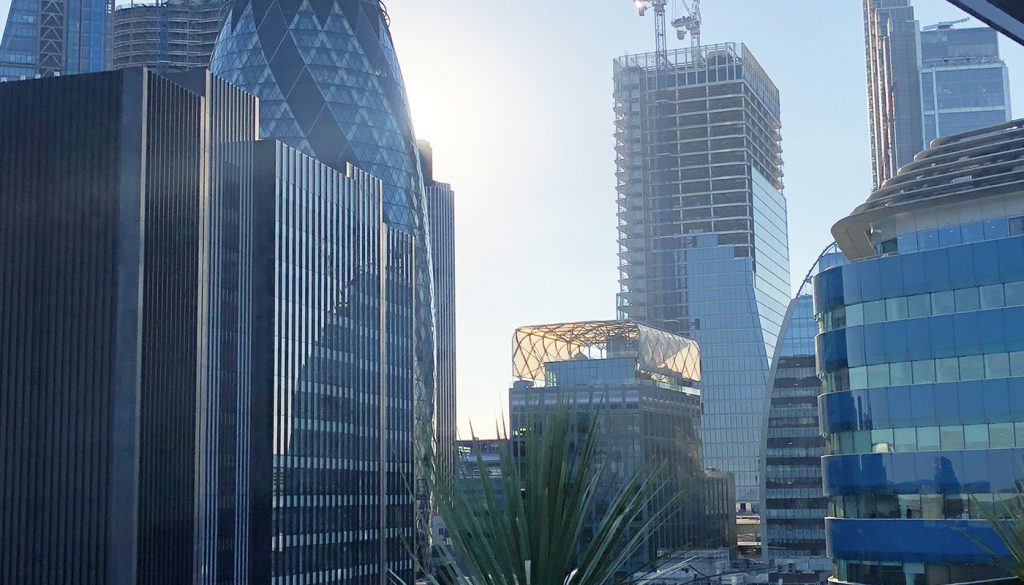
5. Upper 5th Shoreditch
Where? Court House, Shoreditch
Tucked away in back streets of Shoreditch resides the exact same rooftop of the old Shoreditch Court House, where the Cray Brothers were once held. You can even visit Ronnie Cray’s cell too. Beyond the building’s criminal history, the cocktails served may try to steal your night along with good music and some great Instagram inspired spots on the terrace. Think swinging chairs on chains wrapped in floral displays, it is blooming great!

6. Soho House
Where? Shoreditch House, Shoreditch and White City House, White City
Soho House remains as one of London’s sought after private members clubs, boasting exceptional rooftop bars in London. If you’re lucky enough to be a member, or have a friend that is, experience Shoreditch House’s alfresco dining, unique cocktails and dance your way into the night to the beat. More recently opened, White City house has an equally great vibe and al fresco options. Soho House attracts the cool crowd, which means no suits, ties or photos allowed – so edgy!
7. 12th Knot
Where? Sea Containers Hotel, Southbank London
One of my favourite picks for a nightcap would be terrace at 12th Knot, at the Sea Containers Hotel. The eclectic bar is fantastic, residing right on the Thames with scenic views across Blackfriars and St Paul’s Cathedral. The vibrant energy is contagious, but the venue welcomes all guests, even those who wish to curl up by the window and have a mellow evening indoors.
As it seems, every new opening in London has a rooftop bar like Alto by San Carlo at Selfridges and there are so many other great locations with outdoor spaces like Pergola for big groups, Madison, Vertigo & City Social, The Boundary, Aqua Spirit, The Rooftop, Culpeper, OXO tower and many more. Where will you choose?
-

New York snags top spot for Meetings & Events in North America in 2020
CWT M&E, the global meetings and events division of CWT, today unveiled its ranking of the top 10 cities for meetings and events in North America in 2020, with New York claiming the number one spot. The ranking is based on proprietary and industry data contained in CWT’s 2020 Meetings & Events Future Trends report, to be published next week.
The top 10 cities for meetings and events in North America (versus 2019):
- New York (2)
- San Francisco (8)
- Chicago (9)
- Atlanta (-)
- Toronto (-)
- San Diego (-)
- Seattle (7)
- Orlando (3)
- Dallas/Fort Worth (6)
- Las Vegas (1)
The Big Apple snatched the number one spot from Las Vegas, which tumbled to #10. San Francisco and Chicago, on the other hand, climbed six spots to claim the #2 and #3 ranking in 2020. After missing the cut in 2019, Atlanta, Toronto, and San Diego round up the top six destinations for meetings and events next year.
While demand for meetings and events continues to rise in North America, the pace of growth has fallen, tempered by political headwinds.
“Political events have a direct impact more than ever on companies’ quarterly and annual outlooks,” said Tony Wagner, Vice President, Americas and South Pacific regions, CWT Meetings & Events. “Some industry segments are pulling back and are being a bit more cautious.”
Fears of a looming economic slump, driven in part by the deepening trade war between the world’s two largest economies, the US and China, are also impacting booking times. Large events previously booking at least six months in advance are now seeing shorter windows of three months, hobbled by the geopolitical and global economic uncertainty.
Close at the heels of 2020’s top 10 North American cities are five destinations that are expected to make waves next year, including last year’s Super Bowl host, Minneapolis, as well as Indianapolis, Austin, Houston, and Portland. These destinations typically offer better values than the top-tier cities, along with an increasing number of competitive facilities that can host meetings and events of varying sizes.
CWT is a leading global partner in business travel, meetings, and events. Operating across six continents, we deliver sustainable, tailored solutions that help organizations connect, engage, and thrive in an evolving world. Our myCWT platform integrates advanced technology with human expertise to simplify travel and enhance traveler and attendee experiences. Extensive global coverage, seamless data integration, AI-driven analytics, and carbon-conscious travel tools enable businesses to optimize their travel and meetings programs while delivering measurable value.
With 150 years of industry experience and a deep commitment to partnership, CWT collaborates with clients to shape the future of business travel and events, making them more efficient, responsible, and impactful.
CWT Meetings & Events
CWT Meetings & Events (M&E) is an award-winning global corporate events management service. Representing all industry sectors, CWT M&E delivers comprehensive live, virtual and hybrid event solutions for thousands of customers every year. Ranging from end to end productions of some of the world’s largest and complex global conferences, through to intimate national teambuilding experiences.
Follow us on LinkedIn, Facebook and Twitter. -
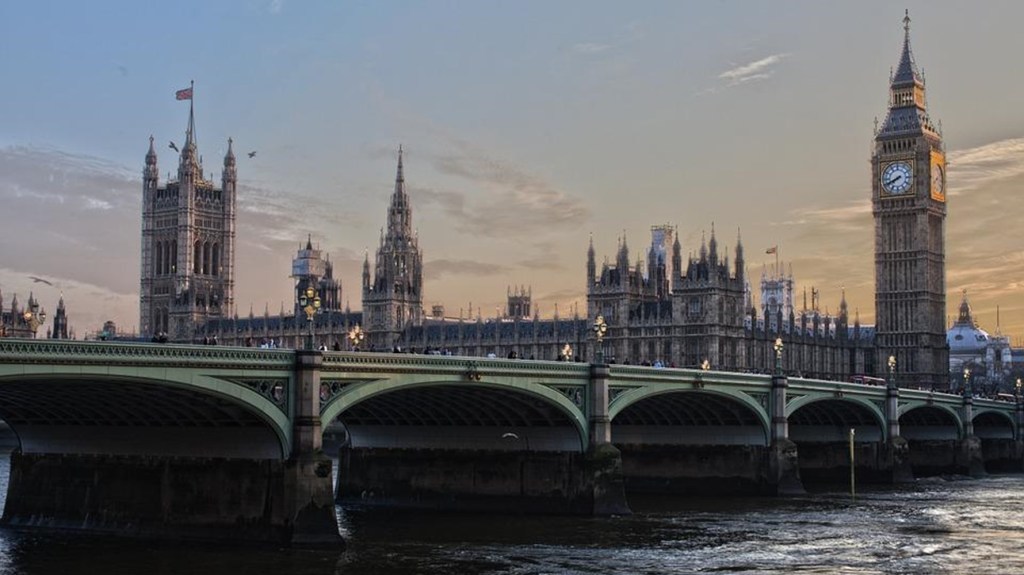
London retains top spot for Meetings & Events in EMEA in 2020
CWT M&E, the global meetings and events division of CWT, today unveiled its ranking of the top 10 cities for meetings and events in Europe, the Middle East and Africa (EMEA) in 2020, with London holding on to the coveted number one spot. The ranking is based on proprietary and industry data contained in CWT’s 2020 Meetings & Events Future Trends report, to be published next week.
The top 10 cities for meetings and events in EMEA (versus 2019):
- London, UK (1)
- Frankfurt, Germany (10)
- Paris, France (9)
- Berlin, Germany (4)
- Barcelona, Spain (3)
- Milan, Italy (-)
- Cologne, Germany (8)
- Stockholm, Sweden (7)
- Amsterdam, Netherlands (-)
- Vienna, Austria (6)
Brexit and a change in government notwithstanding, London remains the number one destination for meetings and events in EMEA in 2020. Frankfurt and Paris jumped from the bottom of last year’s top 10 list to #2 and #3 next year. Germany is the only country in EMEA with multiple cities making the list, including Berlin and Cologne. The lone Italian city of Milan makes an appearance in the 2020 list, along with Amsterdam, after failing to make the cut last year.
“London and the UK continue to be strong for meetings and events,” said Ian Cummings, Vice President, EMEA, CWT Meetings and Events. “The uncertainty over Brexit—and the resulting devaluation of the pound—has made the UK an even more attractive destination.”
Apart from London, Manchester also made a shorter list of destinations on the rise in the region, buoyed by major developments, including a new 20,000-capacity arena.
Other up-and-coming cities in 2020 include Porto in Portugal, Seville in Spain, the Italian city of Rome and the French city of Nice. These destinations typically offer better values than the top-tier cities, along with an increasing number of competitive hotels and venues that can host meetings and events of varying sizes.
Nowhere is sustainability having more of an impact on business than in Europe. It’s encoded into law—as in France with its société à mission, a new corporate structure for companies with a social and environmental mission beyond profits, that is expected to influence suppliers they work with. It’s in investments in electric cars by European car manufacturers—creating opportunities for new product launches. It’s in working towards becoming the world’s first carbon neutral city as the Danish capital of Copenhagen is doing—with 70% of its hotel rooms now holding official eco-certification. Sustainability is a key driver for M&E in EMEA in 2020 and beyond.
CWT is a leading global partner in business travel, meetings, and events. Operating across six continents, we deliver sustainable, tailored solutions that help organizations connect, engage, and thrive in an evolving world. Our myCWT platform integrates advanced technology with human expertise to simplify travel and enhance traveler and attendee experiences. Extensive global coverage, seamless data integration, AI-driven analytics, and carbon-conscious travel tools enable businesses to optimize their travel and meetings programs while delivering measurable value.
With 150 years of industry experience and a deep commitment to partnership, CWT collaborates with clients to shape the future of business travel and events, making them more efficient, responsible, and impactful.
CWT Meetings & Events
CWT Meetings & Events (M&E) is an award-winning global corporate events management service. Representing all industry sectors, CWT M&E delivers comprehensive live, virtual and hybrid event solutions for thousands of customers every year. Ranging from end to end productions of some of the world’s largest and complex global conferences, through to intimate national teambuilding experiences.
Follow us on LinkedIn, Facebook and Twitter. -
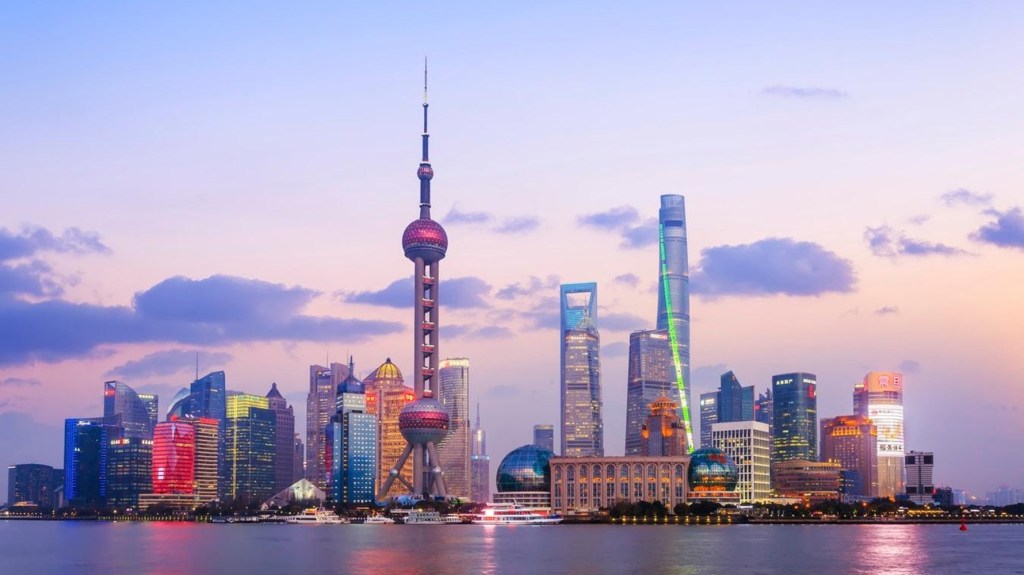
Shanghai retains top spot for Meetings & Events in Asia Pacific in 2020
CWT M&E, the global meetings and events division of CWT, today unveiled its ranking of the top 10 cities for meetings and events in Asia Pacific (APAC), with Shanghai holding on to the coveted number one spot. The ranking is based on proprietary and industry data contained in CWT’s 2020 Meetings & Events Future Trends report, to be published next week.
The top 10 cities for meetings and events in APAC (versus 2019):
- Shanghai, China (1)
- Beijing, China (3)
- Singapore (2)
- Bangkok, Thailand (4)
- Sydney, Australia (5)
- Tokyo, Japan (6)
- Hong Kong, China (7)
- Mumbai, India (9)
- Melbourne, Australia (8)
- Chengdu, China (10)
The top 10 list in APAC has proven sticky, with the exact same cities featured in both the 2020 and 2019 lists—with most hardly budging from last year’s rankings and with no new entrant in sight. China, once again, netted the most entries, including Beijing and Chengdu, and continues to drive M&E activity in the region.
As in North America, the increasingly acrimonious trade war between the world’s two largest economies is threatening to derail this growth, and is stoking fears of potentially triggering a recession.
“It is hard to underestimate the impact of the US-China trade tit-for-tat,” said Sam Lay, Senior Director, Asia Pacific, CWT Meetings & Events. “Companies across the region, including those in the meetings and events industry, are wary of the deteriorating situation and its negative effect on business.”
Closer to home, the three-month old protests rocking the streets of Hong Kong are also being closely watched by the business community. A number of countries have issued safety advisories urging travelers to exercise caution, and some businesses are taking a wait-and-see approach with their meetings and events scheduled in the near to mid-term. However, sentiment remains positive for Hong Kong as a key international business destination in 2020.
The region itself continues to be a top draw for incentive travel, as attendees look for unique, life-changing experiences in the varied and distinct cultures of Asia Pacific. Demand is going beyond the well-known regional hubs and into second and third-tier cities.
Among the region’s destinations on the rise are Hanoi in Vietnam, Dalian and Macau in China, Malaysia’s capital, Kuala Lumpur, and Perth, Australia. These destinations typically offer better values than the top-tier cities, along with an increasing number of competitive hotels and venues that can host meetings and events of varying sizes.
CWT is a leading global partner in business travel, meetings, and events. Operating across six continents, we deliver sustainable, tailored solutions that help organizations connect, engage, and thrive in an evolving world. Our myCWT platform integrates advanced technology with human expertise to simplify travel and enhance traveler and attendee experiences. Extensive global coverage, seamless data integration, AI-driven analytics, and carbon-conscious travel tools enable businesses to optimize their travel and meetings programs while delivering measurable value.
With 150 years of industry experience and a deep commitment to partnership, CWT collaborates with clients to shape the future of business travel and events, making them more efficient, responsible, and impactful.
CWT Meetings & Events
CWT Meetings & Events (M&E) is an award-winning global corporate events management service. Representing all industry sectors, CWT M&E delivers comprehensive live, virtual and hybrid event solutions for thousands of customers every year. Ranging from end to end productions of some of the world’s largest and complex global conferences, through to intimate national teambuilding experiences.
Follow us on LinkedIn, Facebook and Twitter. -
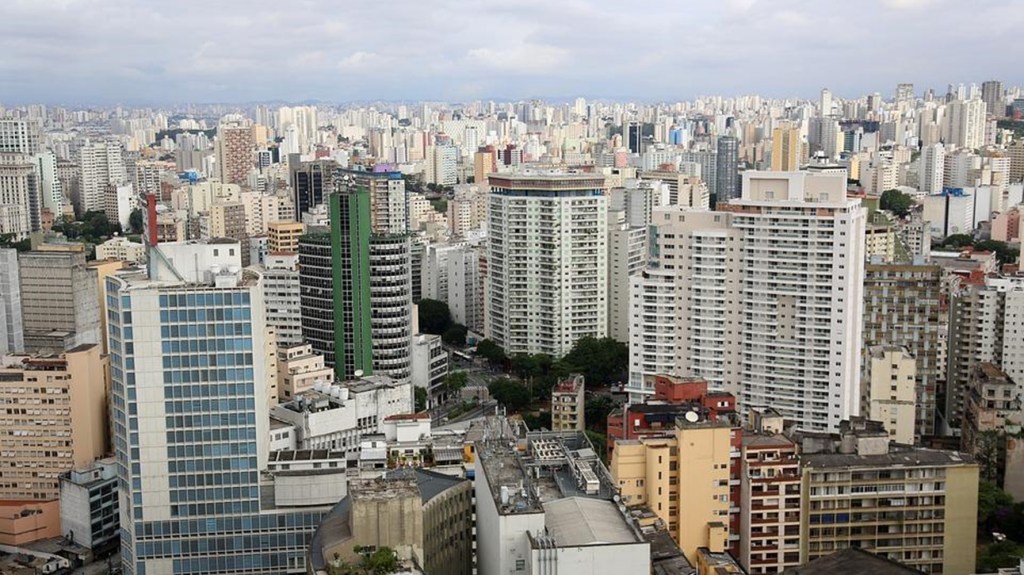
Sao Paulo remains top destination for Meetings & Events in Latin America in 2020
CWT M&E, the global meetings and events division of CWT, today unveiled its ranking of the top 10 cities for meetings and events in Latin America in 2020, with Sao Paulo retaining the prized top spot. The ranking is based on proprietary and industry data contained in CWT’s 2020 Meetings & Events Future Trends report, to be published next week.
The top 10 cities for meetings and events in Latin America (versus 2019):
- Sao Paulo, Brazil (1)
- Bogota, Colombia (3)
- Lima, Peru (6)
- Rio de Janeiro, Brazil (4)
- Mexico City, Mexico (2)
- Curitiba, Brazil (9)
- Medellin, Colombia (10)
- Belo Horizonte, Brazil (-)
- Buenos Aires, Argentina (-)
- Cartagena, Colombia (-)
Apart from Sao Paulo, the 2020 rankings show Brazil’s other top city hold on to its 2019 spot—Rio de Janeiro at #4. Additionally, Brazil snagged two more places—Curitiba, which went up three spots to #6, and Belo Horizonte, a new entry for the country.
Multiple cities in Colombia also made our 2020 list, including Bogota, Medellin and Cartagena. Mexico City, last year’s #2, slipped a few places to #5. Since missing last year’s list, the Argentinian capital of Buenos Aires made an appearance for 2020 at #9.
“The wait-and-see attitude that came with the 2018 presidential elections in Latin America’s two biggest economies, Brazil and Mexico, have given way to expectations of explosive growth in 2020-21,” said Gustavo Elbaum, Senior Director, Latin America, CWT Meetings and Events. “The uncertainty has shifted to the region’s third largest economy, Argentina, which is facing its own presidential elections this year amid a deteriorating economy.”
The ebb and flow of political and economic uncertainties in the region are impacting business decisions, leading to lead times that average only around 30-45 days.
A key trend in Latin America in 2020 is moving away from smaller, shorter meetings towards larger conventions as companies consolidate events regionally to achieve cost and logistics efficiencies. This allows more investments to flow into improving the content and extending convention days for maximum impact.
CWT’s 2020 Meetings and Events Future Trends Report also names the destinations to watch in the region. They include: Guadalajara and Puebla in Mexico, Campinas and Porto Alegre in Brazil, and Quito in Ecuador. These destinations typically offer better values than the top-tier cities, along with an increasing number of competitive facilities that can host meetings and events of varying sizes.
CWT is a leading global partner in business travel, meetings, and events. Operating across six continents, we deliver sustainable, tailored solutions that help organizations connect, engage, and thrive in an evolving world. Our myCWT platform integrates advanced technology with human expertise to simplify travel and enhance traveler and attendee experiences. Extensive global coverage, seamless data integration, AI-driven analytics, and carbon-conscious travel tools enable businesses to optimize their travel and meetings programs while delivering measurable value.
With 150 years of industry experience and a deep commitment to partnership, CWT collaborates with clients to shape the future of business travel and events, making them more efficient, responsible, and impactful.
CWT Meetings & Events
CWT Meetings & Events (M&E) is an award-winning global corporate events management service. Representing all industry sectors, CWT M&E delivers comprehensive live, virtual and hybrid event solutions for thousands of customers every year. Ranging from end to end productions of some of the world’s largest and complex global conferences, through to intimate national teambuilding experiences.
Follow us on LinkedIn, Facebook and Twitter. -
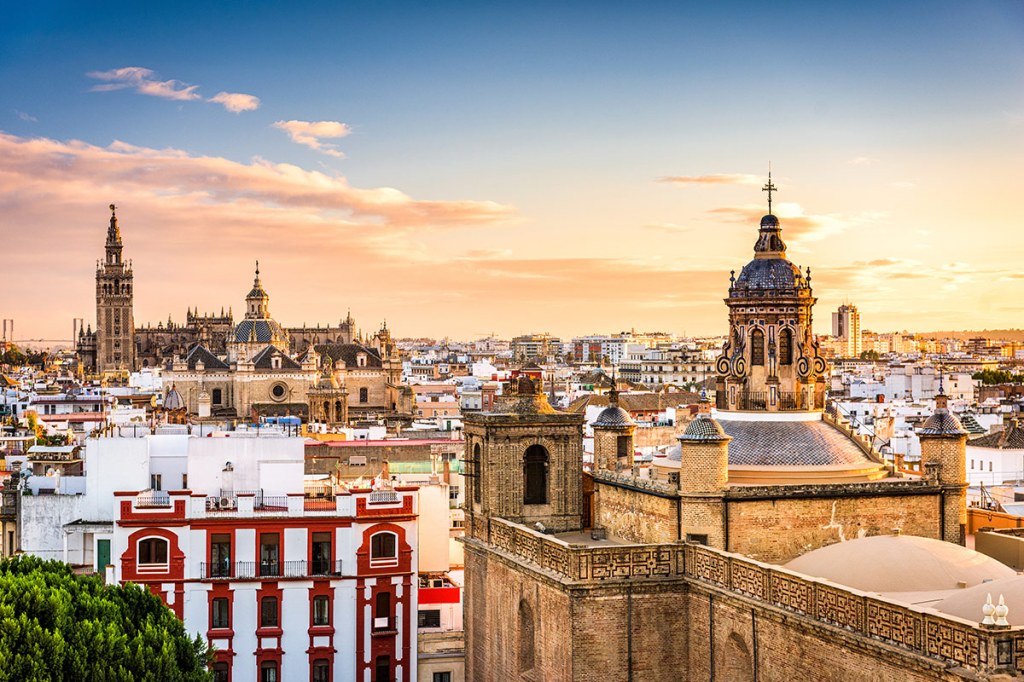
4 unique incentive destinations you need to visit
Incentive travel plays a significant part in driving business within companies. Employees are willing to stay late for the extra call and self-motivate themselves to reach their targets. However, the motivation comes from the opportunity to join a company venture to upcoming, exotic destinations on an all-expenses covered trip.
Gone are the days where incentive travel provided the opportunity to visit a classic destination. As time moves on, unique cultural activities, extraordinary opportunities lead as the ideal characteristics of an incentive destination, allowing attendees to try new things.
Where are the hottest destinations to visit?
1. Seville, Spain

Seville provides an authentic taste of Spain. The city boasts vast amounts of modern and traditional architecture, warm climate all year round and an abundance of history. The city itself resembles a watercolor painting with picturesque streets, cobbled stone streets, and lined with orange trees, filling surrounding areas with a gorgeous citrus scent. Seville welcomes visitors with great warmth, with direct access to a plentiful number of boutique and luxury hotels, numerous gastronomic delicacies and cultural activities. Guests cannot leave Seville without trying local Spanish wine, experiencing a tapas tour, visiting the majestic palace of Alcázar or trying the local Flamenco dance.
2. Cartagena, Colombia

Experience Cartagena, where you will discover the “Jewel of the Caribbean”, a city filled with plenty of natural beauty, especially the magnificent and iconic fortress. Soak up the atmosphere as you explore the delights of the coastal city, before stopping for a refreshing drink, a taste of the local Colombian cuisine, and dance salsa. Then, in Bogota experience a whirlwind of history and modernity mixed into an engaging and vibrant capital. Its urban vibe and carefully preserved colonial buildings are home to fantastic museums, hotels, bars, and restaurants. Bogota provides the opportunity to discover another side of Colombia.
3. Lapland, Finland
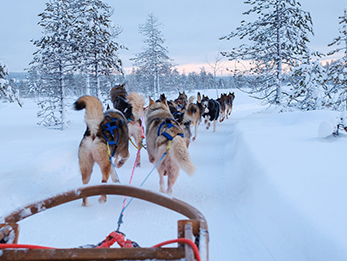
Lapland’s unique environment and arctic conditions have made it a mystical destination, providing exciting opportunities with its unique twists. The Finnish Lapland resembles a real fairytale Winter Wonderland, especially with the striking natural sight of the Northern Lights. Hop on board a snowmobile and ride through the pristine-white forests, and experience a husky sleigh ride for yourself. If you want to recharge, try out one of the authentic Finnish saunas and treat yourself to a peaceful afternoon. Lapland is the perfect incentive destination for attendees who wish to experience somewhere distinctive, leaving attendees with memories to last a lifetime.
4. Laos & Cambodia

Escape to Southeast Asia’s’ sought after destinations, Laos, and Cambodia. It’s a part of the world that genuinely inspires attendees, where ancient culture meets modern society. Cambodia’s home to the world-renowned Angkor Wat, which has been a UNESCO world heritage site since 1992. To witness an unforgettable moment, visit Angkor Wat during sunrise, it’s truly magical. Cambodia guides you through its unsuspected treasures within its territory, as you move along to Laos, offering up the best of Southeast Asia in bite-size chunks. Get up close with exotic and endangered animals, such as the rare black Asian bears, practice the spiritual and Zen nature of the Buddhist culture, and visit the natural rushing waterfalls of Kuang Si. Combined with the vast number of luxe hotels and breathtaking terrain, and local cuisine, which takes you on a gastronomic tour through the Southeast Asian region. Laos will leave a lasting memorable impact on all attendees for years to come.
To book any of the above destinations, or for further inspiration, contact us today.
-

Fit for work: Can you stay healthy on a business trip?
When it comes to our health, there’s a marked difference between traveling for leisure and traveling for business. Holidays bring dips in the ocean, fresh coconut water, massages and grilled seafood dinners, amounting to an epic rejuvenation of body, mind and soul. Business trips – on the other hand -often bring manic races through big cities punctuated by croissant-heavy breakfasts and warm white wine at networking events, several hours after you wanted to be in bed.
Conventional wisdom dictates that it’s inevitable to pick up unhealthy habits while traveling for work. But the consequences of sacrificing your standards at the alter of midnight room service are grave.
A Columbia University study found that heavy business travelers – those on the road three weeks per month – are twice as likely to be obese compared to those who travel just one to six. Less frequent business travelers don’t get off too easily. Near-half-time travelers are more likely to have trouble sleeping, and higher levels of smoking and alcohol consumption.
The good news is that business travelers are increasingly aware of the impact on health. Our research shows that awareness among business travelers of maintaining healthy eating habits is growing momentum. Overall 38% of business travelers eat healthier food while on the road. Meanwhile, 42% work hard to adhere to health and wellness routines in 2019 compared to 38% in 2017.
Here are seven ways that employers and employees can stay healthy.
- Plan ahead and simplify– You don’t have to go to the extremes of Mark Zuckerberg or Steve Jobs and wear the same outfit every day to minimize decision-making. However, if you plan your outfits, organize your schedule to a tee, and bring print-outs with you – you’ll have the mental capacity and clarity to make the most of an important business trip.
- Buffer zone – Endless hash browns on an expense account? We know you’re a high-roller. A buffet is hard to resist. But you can beat temptation by creating a buffer zone between you and the buffet. Choose a hotel that only offers the option at breakfast. If you’re faced with a buffet lunch and dinner too, it could test your willpower.
- Cool runnings – Choose a hotel room with a fridge. Store protein shakes, fruit and carrot sticks and any other alternative to fat and sodium-rich restaurant and takeaway meals.
- Start clean – Lengthy dinners and drinks are commonplace on business trips. Have a light, protein-packed breakfast and lunch and hydrate constantly. By the time dinner rolls around you can partake without guilt, and 3000 calories already under your belt.
- Brain food – With so much to take in and adapt to, work trips can be mentally taxing. Paradoxically, they’re an opportunity to make an impact with your most creative and inspired ideas. Avoid the temptation to start and end the day scrolling through social media and firing off emails. Set aside 20 minutes to read an inspiring book, do a guided meditation or visualize yourself succeeding in your goals for the day ahead.
- Class Act – Find a hotel that offers fitness classes or is near a fitness or yoga studio. Apps like MindBody and GuavaPass will show you where to find your nearest class. If you schedule one in advance, it will be less easy to make excuses.
- What a difference a day makes – Can you add a day before or after your trip to soak up your surrounds and decompress? Traveling somewhere new can do wonders for inspiration but it requires downtime away from a laptop.
Making small changes to your travel program and habits while on the road, can boost productivity, well-being and overall health and happiness, “Maintaining healthy habits while traveling is nearing the top of the priority list for travelers around the world,” said Niklas Andreen, CWT’s Chief Traveler Experience Officer. “At the end of the day, being in tune with what matters to your employees is indispensable for retaining and attracting the best talent.”
Image credits: Adobe Stock
- Plan ahead and simplify– You don’t have to go to the extremes of Mark Zuckerberg or Steve Jobs and wear the same outfit every day to minimize decision-making. However, if you plan your outfits, organize your schedule to a tee, and bring print-outs with you – you’ll have the mental capacity and clarity to make the most of an important business trip.
-

How to write an effective corporate travel policy – Everything you need to do business travel right.
Writing an effective corporate travel policy
There’s a lot to consider when arranging business travel, so it makes sense to have a robust corporate travel policy in place. Setting out all the relevant procedures will help keep your employees safe while working to reduce your business’s travel spend. Some of the key steps to creating your ideal company travel policy include:
- Defining your objectives.
These could include keeping costs down, ensuring employees are safe and comfortable and helping them make decisions on their travel. - Ensuring your travel policy reflects travelers’ needs.
Consider the most common destinations for your business travelers and the best way to get to them, are there specific needs or considerations related to your company’s activities? - Giving your employees options.
Everyone likes to have a choice, so try to give your employees a selection of hotels or airlines. You can keep costs down by capping the hotel star rating or class of airline ticket. - Setting clear guidelines for all aspects of travel and more.
Your travel policy needs to be all-encompassing so it leaves no room for doubt – that includes everything from airline booking rules to the policy on areas such as additional expenses and the acceptance of gifts. - Making sure everyone knows what the travel policy is.
All relevant documents need to be readily available to everyone within your company whether via the intranet or a travel platform. The policy needs to be clearly communicated to all, including line managers so they can enforce it.
Corporate travel policy best practices
When writing a corporate travel policy document, one size doesn’t fit all. You should start by thinking about the nature of your organization – is it pretty strict or relaxed? Make sure your travel policy follows the same tone.
Highlight how important it is that your employees read the document, not least for their own safety, and clarify what they need to do in an emergency situation, as well as who they’d need to contact.
Other information you should include is how business travelers should get to and from airports, and to what extent they’re permitted to combine their business travel with their own leisure.
Empower your employees by giving them a choice of hotels while capping the star rating or cost per room. Impress upon them the fact that complying with your travel policy will ensure the smooth and easy reimbursement of additional expenses. Finally, keep reviewing your corporate travel policy. Flexibility is key, and your travel policy and procedures should be open to the changing requirements of your employees and your business.
Remind your senior leaders that this is for them as well as business travelers –if everyone follows the policy it will help your company offer more effective support to its strategic partners, as well as allow better management of its expenses budget.
What to include in your corporate travel policy
There are many aspects of business travel to consider before writing your corporate travel policy. While your policy should reflect the unique needs of your business and employees, you’ll need to establish policies for these fundamental areas:
- Airline, rail, hotel and rental car reservations.
- The use of other transportation, such as taxi cabs.
- Rules for on-site spending, including meals, entertainment and phone calls.
- Security relating to travel – both in terms of personal safety and work materials.
- The rules around gifts and favors that may be bought or received during business travel.
- The approval process that employees and managers need to follow.
- The system for the payment of any expenses incurred during travel.
Laying out your travel expense policy
Establishing a clear and fair expenses policy is vital to the health of your business – poor management of travel expenses costs your business money. Here’s how we’d recommend your policy approaches a range of key expenses:
Additional travel
State that travel costs will cover the purposes of business travel only – whether to events, meetings or training – and that non-business or leisure travel comes out of the employee’s pocket. You should also encourage business travelers to use the most cost-effective mode of transport, taking expected journey time into account.
Accommodation
Empower your business travelers by giving them control over their own spending – capping their budgets by hotel star rating or amount per room. You could provide average room rates in each location, and ask them to stay within that range. Specify that standard rooms should be the required room type, and clearly outline whether your business will cover minibar charges, Wi-Fi costs, etc.
Meals
Depending on your company culture, you can be as explicit as you like with your meal policy. Many companies find it easier to offer a daily allowance that covers breakfast, lunch and dinner, but your policy should include a statement about alcoholic beverages – usually to clarify that they will be at the employee’s cost, unless they’re with a client.
Tips
Many corporate travel policies cover tips to 20 percent, but only when it’s already been included in the bill as a service charge. If a business traveler decides to add a tip for anything else it should be out of their own pocket, or at a manager’s discretion.
Entertainment
Entertainment can cover eating, drinking or any other hospitality. The most effective way to manage entertainment expenses is by setting a limit or range, and advising that managerial approval will be required for any reimbursement above and beyond this amount.
How to forecast your budget
Using data on traveler behavior and previous expenses is key to setting intelligent forecasts for your annual expenses budget. Different employees will travel in different ways, to different locations, and at different frequencies. However, having data on the average flight cost per mile, as well as the nightly hotel, average meal and ground transportation costs, will mean you can accurately predict and anticipate your expenses budget for the year ahead.
Setting expense limits
For the most part, business travelers want to do what’s right for their company – and many companies find that giving employees control over their own spend can actually reduce overspending. Find a happy middle ground by giving employees control while setting key limits.
For example, meal expenses can be set as an overall allowance per day, giving the employee the choice of how much to spend individually on breakfast, lunch and dinner.
When it comes to booking accommodation, give employees the choice of a standard room in any hotel of a certain star rating or a maximum price per night.
For ground transportation, a corporate travel policy should clearly advise employees to choose the most cost-effective method considering the journey time. Most business travelers will accept being restricted to flying economy on short-haul trips.
Handling expense claims
It’s important that business travelers have a clearly defined method of claiming back their expenses. Ask them to fill out an expense report for the date, amount, category, location and business purpose of their claim – and decide whether you’d like them to file receipts for all their expenses, or just ones that exceed a certain amount.
Give your employees a time frame for submitting expenses – this will help your business maintain a stable and accurate cash flow. Similarly, let them know when they can expect money to be credited back into their accounts. Depending on the amount spent, it might be a good idea to clarify who will approve their expenses in each case.
Setting up your guidelines and procedures
There is no one, uniform corporate travel policy. If your policy doesn’t fit with the nature of your organization, it’s unlikely to ever meet the expectations of your stakeholders. Fundamentally, your travel policy and procedures must be adapted to your business’s culture, and be flexible around the needs of your employees, industry and economy. They also need to be widely circulated and understood.
Your guidelines and procedures will help your business travelers make decisions within the framework of your corporate travel policy. They should include procedures for all bookings – after all, it’s important that employees are clear on what is expected of them at every point of their business trip.
It might also be necessary to include a section about the consequences of not following the set guidelines and procedures.
Considering safety and security procedures
The safety, security and well-being of employees must be at the heart of every corporate travel policy. While they’re engaged in business travel, your employees are your responsibility, so it’s crucial your policy has procedures in place that can ably respond to personal risk, severe weather or political unrest in a foreign country.
Highlight how important it is that your employees read your corporate travel policy document for their own safety, and clarify what they need to do in an emergency situation and who to contact. If your employees are regularly flying out to high-risk countries, organize additional travel safety and security training. We work closely with International SOS to offer enhanced medical and security assistance, and keep your employees safe on the road.
Delivering the travel policy to employees
Once you’ve written your corporate travel policy, you need to make sure your employees read and understand it. Whether you choose to deliver the policy in a printed document, via intranet or in an email, there are some general ways to make sure it’s communicated as effectively as possible.
- Defining your objectives.
-

The perfect fit: Should you have a one-size-fits-all or tailor-made travel policy?
The first step in business travel management is to draft a travel policy. There is a lot to consider when arranging business travel, so it makes sense to have a robust corporate travel policy in place.
But, how is it supposed to be built? Using a one-size-fits-all approach or a tailor-made one taking into account the differences of your traveling population?
Travelers’ perks suffered a major cut during the last big financial downturn. Economy class ruled and hotels’ star ratings dropped even among C-suite executives. Public transport was widely considered and limo rides were severely cut. This lead to an exhausted traveling population and to a poor return-on-investment.
Fortunately, companies are starting to consider other ways of cutting costs and are seeing the benefits of looking after their employees so they can be productive and make the most of their business trip.
Therefore, when it comes to designing a set of rules, is it better to have an egalitarian approach that will not raise any resentments or, on the contrary, is it worth it to have special rules for certain employees?
A clear policy with a standard set of rules for everyone will be easier to implement and follow up, however, you will need to consider if your traveling population is more or less homogeneous.
If you manage business travel for a small or medium-sized company where the travelers have a similar profile and travel cadency, a one-size-fits-all policy might be the perfect approach. It will make your employees feel that you treat everybody in the same way and it will be easier for you to track compliance and negotiate with preferred partners.
However, in big organizations where the traveling population is larger, a one-size-fits-all approach might not be wise.
We are not talking about giving executives unlimited perks and putting the rest of your employees in coach class. Here are five considerations to help you to craft your policy:
- Are they traveling long-haul or short-haul? You can maybe have a cap based on flight duration and allow business or premium economy for flights over a certain amount of hours. When the flights are short there is not much difference from one cabin to another so you might want to save some dollars on your short-haul trips.
- How many trips do they do per year? Obviously, it is very different to take one or two trips per year than to travel constantly. Your road warriors can suffer from exhaustion, so show them some love.
- What is the reason for the trip? It is not the same to travel to attend an internal meeting as to give a presentation that will win the largest account in history. If your employees are traveling to attend a crucial meeting they need to be well-rested. That means business class, a direct flight if possible, nice accommodation with outstanding services, and comfortable and reliable ground transportation.
- Are your top executives leading by example? If you want everybody to adhere to a set of rules, make sure the big bosses also follow them. Nothing is worse than being asked to do something and then see that the rules do not apply to everybody. Consistency will also help you to make the most of your travel program. A lack of compliance can put your whole program at risk. Taking into account that top executives are the ones that travel the most, it is pretty obvious that your travel program will suffer.
- Use gamification to decide who gets extra perks. An excellent way to boost compliance is by applying game techniques to your travel policy. What about tracking compliance and granting extra perks to your most compliant employees?
Learn more about writing an effective travel policy.
Image credits: Adobe Stock
- Are they traveling long-haul or short-haul? You can maybe have a cap based on flight duration and allow business or premium economy for flights over a certain amount of hours. When the flights are short there is not much difference from one cabin to another so you might want to save some dollars on your short-haul trips.
-

CWT Names Andrew Gunnels Chief Procurement Officer
CWT, the B2B4E travel management platform, has appointed Andrew Gunnels as the company’s first chief procurement officer. In his newly-created position, Gunnels will have responsibility over CWT’s global strategic sourcing and procurement operations and will also lead the company’s global real estate and facilities management.
Gunnels reports to Michelle Frymire, EVP and CFO at CWT.
“Andrew’s extensive experience in global procurement and strategic sourcing—having come up from a core finance function before moving to strategic sourcing—have given him a holistic view and understanding of how negotiated outcomes impact performance of the company,” Frymire said. “His new role as CPO very much aligns with CWT’s 3.0 strategy, including the transformation of the procurement function into a world-class business partner to improve competitiveness by driving efficiencies across the indirect supply base.”
Prior to joining CWT, Gunnels served as senior vice president at First Data, where he helped lead the full transformation of its global strategic sourcing function that delivered meaningful financial improvements for the firm.
Gunnels first worked in the travel industry a decade ago via Delta Air Lines where he started in the corporate finance function before heading over to the airline’s supply chain management organization, which worked to maximize quality, delivery and cost competitiveness across its supply chain.
At CWT, Gunnels is charged with taking business partnership and sourcing and procurement performance to the next level, while overseeing the global indirect portfolio of third party purchases, as well as managing CWT’s global footprint of facilities.
Gunnels graduated with a BBA from the University of Georgia and earned his MBA from the Instituto de Empresa in Madrid.
CWT is a leading global partner in business travel, meetings, and events. Operating across six continents, we deliver sustainable, tailored solutions that help organizations connect, engage, and thrive in an evolving world. Our myCWT platform integrates advanced technology with human expertise to simplify travel and enhance traveler and attendee experiences. Extensive global coverage, seamless data integration, AI-driven analytics, and carbon-conscious travel tools enable businesses to optimize their travel and meetings programs while delivering measurable value.
With 150 years of industry experience and a deep commitment to partnership, CWT collaborates with clients to shape the future of business travel and events, making them more efficient, responsible, and impactful.
-

Hotel sourcing in 2020: What’s really changing?
Sourcing was a hot topic at this year’s GBTA convention with education sessions like, “Ditch the Annual RFP (request for proposal) Process for Dynamic Program Management” and “Point Counterpoint – Who Wins the Dynamic Pricing Battle?” Some companies have made headlines recently by declaring traditional sourcing models dead, and news articles consistently boast about sourcing enhancements that may or may not be arriving in the near future.
The reality is there are exciting new advances in technology that can make the RFP – or bidding – season more efficient and create better results. But there are still some practices that will remain the same.
What will change?
Spend Analysis
Travelers booking outside of policy remains high (around 40% for most companies), which means agency data alone isn’t enough to fully understand your travel spend. Yet, reconciling and analyzing data – an important first step in supplier negotiations – is challenging for 73% of travel buyers. Thanks to advances in technology, algorithms can now clean and reconcile multiple data sources and present them visually, making it easier to uncover insights into the total cost of a trip. This data can also be used to negotiate everything from room rates to F&B discounts.
Intuitive sourcing tools
Wouldn’t it be nice if a tool could analyze your data and market trends in order to indicate how likely you are to secure a discount before you spend hours negotiating for it?
CWT Solutions Group is capable of analyzing supply and demand at a market level in order to understand city occupancy rates and room inventory. They combine these findings with client travel patterns, supplier usage (hotel volume, market share, etc.) and change capacity.
The resulting Negotiation Power Index© helps you pinpoint where you should invest sourcing resources and where you should rely on other rate sources.

Algorithms can clean and reconcile multiple data sources.
Reliance on additional rates
Dynamic pricing is not completely overtaking your fixed negotiated rates but they should account for 10-20% of your hotel program.
Additionally, you should rely on rates from your TMC (travel management company) for any property that receives roughly 150 room nights or less, as the discount secured will not be enough to justify the effort spent negotiating. RoomIt Rates offer up to 20% off and a minimum of six amenities.
More companies will be utilizing third-party hotel rates, like those from Booking.com and Expedia Partner Solutions, in their booking tools. These rates act as a gap filler, ensuring you have coverage all over the world, in case of compression, or for those one-off trips your program doesn’t account for. They can also be priced below your client negotiated rate (CNR) depending on fluctuations in BAR.
To meet this growing need, more TMCs are offering third-party rates alongside GDS rates, making it easy for travelers to book a wide variety of content sources via corporate booking channels.
Greater mix of rates
Beyond providing optimal availability, a well-diversified rate mix also ensures optimal savings opportunities as well. A mix of negotiated rates, TMC unique rates, consortia rates, third-party rates and public rates is the best way to ensure the lowest rate is available to travelers.
Even in a company’s top ten destinations, RoomIt has discovered that the lowest rate can be spread between negotiated rates, RoomIt Rates (our unique business rate), CWT Hotel Programme rates (our consortia rate) and third-party rates.
Additional negotiating tactics
For global programs, there may be more emphasis on some additional tactics that help increase efficiency and decrease costs. For example, more hotels are open to two-year deals. Pursuing a two-year deal with core hotels can significantly reduce sourcing time and cost in consecutive RFP seasons.
In regions where discounts are limited, you may also want to start utilizing other forms of hotel spend, such as F&B. These discounts can come about in two different ways. You may be able to justify the expense as a reason to receive deeper room rate discounts, or hotels may provide discounts directly to F&B.
Predictive analytics
One of the newest and most exciting developments is the ability to make forward-looking predictions, rather than only looking at historical data. Data scientists can now build predictive models that look at a large list of factors to help predict future rates for preferred suppliers. If your preferred supplier rates are expected to increase more than similar suppliers in their market, you can add challengers to your RFP solicitation list.

Many hotels are open to two-year deals
What Will Stay the Same?
RFP Process
Negotiating with major properties via the RFP process is not going away. All the hours spent negotiating via RFPs can make us daydream about a new, innovative process, but the reality is this tried and true method still delivers the deepest discounts for clients with significant hotel volume.
However, one thing you can do to ease the burden is offload some of the work on a trusted consultant. These experts negotiate rates for the world’s leading travel programs and have all the data necessary to make well-substantiated decisions.
Dynamic rate share
As mentioned before, another exciting concept is that of dynamic pricing. The reality is companies are still capable of receiving 20%-49% off BAR with fixed negotiated rates. No other rate, including dynamic rates, can provide the same upper limit.
It’s best to save dynamic pricing for areas where you have less buying power, or for when you need a quick win – like when adding a new market partway through the year.
Rate errors
Rate loading errors are still going to be an issue, because the rate loading process is still very manual. Luckily, however, automatic rate auditing tools are more common now. Your travel agency or consultants have technology capable of ensuring rates are loaded accurately, will verify availability, and can see if breakfast, internet, parking, and cancelation policies are correct. Be sure any technology used can detect squatter rates too.
There are exciting changes coming to the sourcing world in 2020 including new rates worth exploring, tools that will make data collection and analysis easier, and methods that will improve negotiations. Despite all this innovation, traditional sourcing methods won’t suddenly disappear with the changing of your calendars.
Find out how a major global IT company reduced their time spent on hotel RFP project management.
-
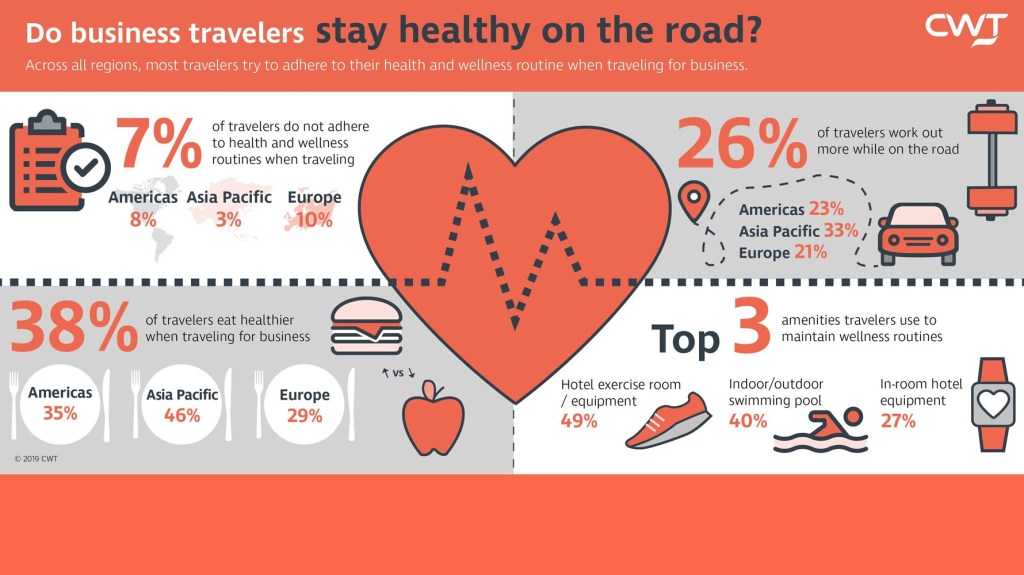
CWT research reveals business travelers are more health-conscious during trips
Research by CWT, the B2B4E travel management platform, shows that awareness of maintaining healthy eating habits is growing momentum amongst business travelers. Overall 38% of business travelers eat healthier while on the road. Asia Pacific travelers are the most likely to eat healthier when traveling for business (46%) compared to travelers in Americas (35%) and Europe (29%).
“Maintaining healthy habits while traveling is nearing the top of the priority list for travelers around the world,” said Niklas Andreen, CWT’s Chief Traveler Experience Officer. “At the end of the day, being in tune with what matters to your employees is indispensable for retaining and attracting the best talent.”
Travelers in Asia Pacific are likely to work out more (33%) while abroad, compared to travelers in Americas (23%) and Europe (21%). On the flipside, Europe business travelers are less likely to work out while on the road (48%) vs. travelers in Americas (38%) and Asia Pacific (32%).
Meanwhile, only 7% of travelers do not adhere to health and wellness routines when traveling. The percentage is higher among Europeans (10%) and Americans (8%), while travelers in Asia Pacific are the least likely to steer away from their wellness routines (3%).
Since 2017, maintaining health and wellness routines while on the road has become an increasing priority for travelers. Across all regions, business travelers are striving to achieve their health and wellness routines regardless of where they are in the world.
CWT’s research also shows that hotel exercise rooms and equipment are the most common way for business travelers to adhere to their health and wellness routines (49%), followed by hotel swimming pool (40%), and in-room hotel equipment such as yoga mats and stationary bikes (27%).
CWT is a leading global partner in business travel, meetings, and events. Operating across six continents, we deliver sustainable, tailored solutions that help organizations connect, engage, and thrive in an evolving world. Our myCWT platform integrates advanced technology with human expertise to simplify travel and enhance traveler and attendee experiences. Extensive global coverage, seamless data integration, AI-driven analytics, and carbon-conscious travel tools enable businesses to optimize their travel and meetings programs while delivering measurable value.
With 150 years of industry experience and a deep commitment to partnership, CWT collaborates with clients to shape the future of business travel and events, making them more efficient, responsible, and impactful.